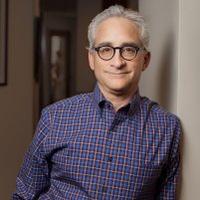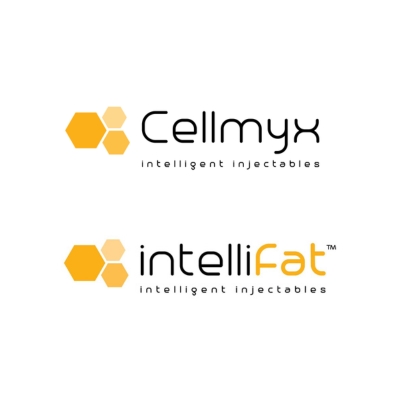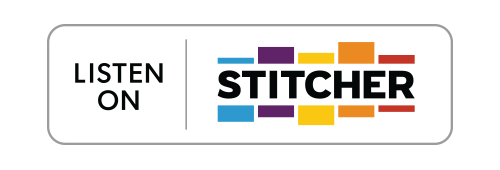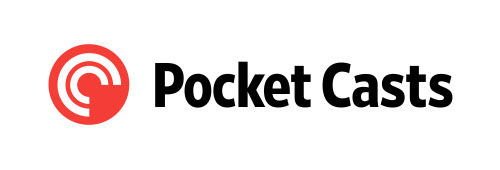 Regenerative medicine is rapidly gaining recognition for its ability to address pain and chronic conditions by promoting the body’s natural healing processes. One of the innovative approaches within this field is the use of intelliFat® BOD™, a technology highly recommended by Dr. Neil Spiegel, a distinguished expert in regenerative medicine.
Regenerative medicine is rapidly gaining recognition for its ability to address pain and chronic conditions by promoting the body’s natural healing processes. One of the innovative approaches within this field is the use of intelliFat® BOD™, a technology highly recommended by Dr. Neil Spiegel, a distinguished expert in regenerative medicine.
What is Regenerative Medicine?
Regenerative medicine focuses on repairing or replacing damaged tissues, organs, and cells by leveraging the body’s natural ability to heal. Unlike conventional treatments that often provide temporary relief, regenerative medicine aims to address the underlying causes of pain and chronic conditions, offering the potential for long-term recovery and improved quality of life.
The Role of intelliFat® BOD™ in Pain Management
intelliFat® BOD™ is an advanced system designed for fat harvesting and transfer. It utilizes the patient’s own adipose tissue to create a biocompatible solution for regenerative therapies. This technology is particularly effective in treating chronic pain and inflammatory conditions, where traditional methods may not provide sufficient relief.
Why Dr. Neil Spiegel Recommends intelliFat® BOD™
Dr. Neil Spiegel, a leading figure in the field, recommends intelliFat® BOD™ to his patients as part of their regenerative treatment plans. This recommendation is based on the technology’s ability to harness the regenerative properties of fat-derived cells. These cells are rich in stem cells and growth factors that are essential for repairing damaged tissues and reducing inflammation—two critical aspects of pain management.
Benefits of Using intelliFat® BOD™ for Chronic Conditions
Minimally Invasive Procedure: intelliFat® BOD™ offers a less invasive alternative to traditional surgeries, with shorter recovery times and fewer risks.
Natural and Biocompatible: By using the patient’s own fat cells, the procedure minimizes the risk of adverse reactions, ensuring a more natural healing process.
Effective for Chronic Pain: The regenerative properties of the harvested fat cells provide long-lasting relief from chronic pain by targeting its root cause.
Dr. Neil Spiegel’s Approach to Chronic Pain Management
Dr. Spiegel’s approach to treating chronic pain involves combining cutting-edge regenerative therapies like intelliFat® BOD™ with a personalized treatment plan tailored to each patient’s needs. His focus is on promoting healing from within, offering a holistic solution that goes beyond temporary pain relief.
The Future of Regenerative Medicine and Chronic Pain
As regenerative medicine continues to evolve, technologies like intelliFat® BOD™ are likely to play an increasingly important role in how chronic pain and conditions are treated. Dr. Neil Spiegel’s endorsement of these innovative treatments underscores their potential to revolutionize pain management and improve patient outcomes.
You may also refer to the transcripts below for the full transciption (not edited) of the interview.
Greg Voisen
Welcome back to Inside Personal Growth. This is Greg Voisen, the host of Inside Personal Growth, and joining me from Rockville, Maryland, on the other side of the country. here is Dr Neil Spiegel. Dr Spiegel, good day to you. How you doing?
Dr. Neil Spiegel
Good.
Greg Voisen
Good to have you on the podcast and to speak not only about your practice, but also about how you're using Intellifat and the Cellmyx products. And just to let my listeners know, the show is being sponsored by both Cellmyx and Intellifat. And Dr Spiegel is somebody who actually uses the Intellifat kits in his practice. So, without further ado, Dr Spiegel, I want to let our listeners know a tad bit about you before we get into doing the actual podcast itself. He's a talented physician leveraging traditional and alternative methods to diagnose and treat people in the Washington DC area, and it's osteopathic center for healing and Rockville, Maryland. He attended medical school at NY Institute of Technology College for osteopathic medicine. He went on to finish his postgraduate and residency training in physician, medicine and rehabilitation at New York University. And in more recent years, Dr Spiegel also completed a fellowship in anti aging and functional and Regenerative Medicine, which is really important for the things we're going to be talking about. As the founder and head of his center, he has a special interest in caring for patients which are challenging or difficult to treat conditions with more than 25 years of professional expertise. He also excels in working with men and women who suffer from acute and chronic musculoskeletal and neurological pain syndromes. Throughout his career, he's dedicated to helping people, and he's earned him numerous professional awards, including top Doctor survey awards in the state of Maryland, Volunteer Service Award he saw also a key contributor in developing and growing the free clinic and treating uninsured in Montgomery County, Maryland. He has multiple certifications and fellowships, and he specializes in regenerative and anti aging. Well, welcome to the show, and thanks for taking this time to kind of fill our listeners in, and you kind of start off Dr speak like explaining what these Intellifat kits, which I've mentioned, have done for your practice, and how are you really using them in your practice?
Dr. Neil Spiegel
So one of the things that we do is we treat patients that have degenerative joint disease. So let's take, for instance, a knee. So patients will come to us and they're faced with surgery, meaning a knee replacement, versus treating them with the more traditional methods of maybe physical therapy or cortisone injections, or sometimes What they use, hyaluronic acid, which is a synthetic derived product to replace the synovial flu with a higher viscosity fluid, right? So there's been nothing kind of like in between those treatments and a knee replacement. The problem with knee replacements in general is that, number one, some of the people are too young, and not everybody that has a knee replacement is happy, absolutely so. So the numbers about one in one in five people have still have pain in their the same type of pain after the surgery and after doing a knee replacement, the rehab after a knee replacement is a good year. And even though people kind of feel like their knee replacement helped them, their knee is not totally normal. So the question is, can we do something in the in the middle to preserve the knee? So at the end of the day, I think it's a pain management strategy. It's like, how do we lessen the pain and prolong the life of the joint without having to do major surgery? I mean, that doesn't mean injection
Greg Voisen
itself with the adipose and actually using the adipose and filtering it and then injecting it into the. Knee or the shoulder or whatever area where you're having pain. What we've found is that that actually lasts quite a long time. I mean, it can it's extremely successful. I can't quote exact rates, but I'll tell you between the 85 and 90% range as far as being successful. Have you noticed this in your practice as well?
Dr. Neil Spiegel
So I think I've noticed that only because I picked the right people right so you you have to select the right case. So if a patient has far advanced arthritis and they've already have limited range of motion, it's sometimes difficult right to get to get a good result, but if you have a patient with more mild to moderate disease and they're suffering with pain, I think that it's an excellent choice to use the to use the intellifat kit, which basically helps us isolate what are called the stroma vascular tissue, which is Rich in mesenchymal stem cell to me, what happens is that the most of the time people are coming to us, they they have, not only did generation, which is, I want to kind of enunciate that term, right versus inflammation, there are a lot of people that have degeneration, that don't have pain, they just have mild stiffness, right? But most of the people are not coming to us with mild stiffness. They're coming to us with the stiffness and pain and they have joint swelling, right? So there's fluid in the joint, which basically means that's already quote, unquote, arthritis, right? Inflammation. So I like to distinguish that, especially when I'm teaching the medical students. It's like, what's the difference? Like, you can have arthritis without degeneration, and you can have degeneration without arthritis. People with arthritis will have pain and sometimes
Greg Voisen
go ahead. Well, the interesting thing that you can do when you're practicing this with this with the intellifact kits, is certainly, as you said, the successes and you choosing the right patient, right the right person that this would work well with. And that brings me to this. You know, regenerative medicine is used all over the place. Today, people talk about it and with they also talk about functional medicine. How have these how the kits that you're using kind of align with the principles of the practices that you have chosen to to do in in your organization there and the osteopathic center for healing. How is that aligned with it? How do these kids so, so functional person?
Dr. Neil Spiegel
So, I guess the best definition of functional medicine is, let's get the root cause of illness. If we find the root cause of illness and we somehow can change it. We change everything. So when you, when you the other thing is the body has an intrinsic ability to heal itself if you give it a chance. All right, so, so if we, if we take the the cells from our tissue, and we we've kind of all we're doing is we're taking it from one place and putting it into another place, right? So we're saying, I'm going to take what God gave you, right, pull it out, and I'm going to put it into the place where you really need it, right, to help heal it. So to me, that's the the the basis of functional medicine is really getting the body to heal itself once you realign it. So functional medicine, well, you know the what I do with my patients is not only the regenerative piece, but it's like, what's driving the inflammation?
Greg Voisen
Well, when you're a do and you're practicing like you're practicing, you're actually dealing with people at a level of spiritual, emotional, mental, and you're looking at their diet and nutrition and exercise. And I would think that you're actually making lots of dietary recommendations as well to help to prevent from the inflammation. That be correct.
Dr. Neil Spiegel
I mean, yes, that is correct. Yeah, yeah, that is correct. I mean, you know, there's the old statement, what you are, what you eat, right? And, you know, I always make fun, the American diet is not really good for certain. And you wonder why we're, you know, why we have, you know, you know, an epidemic of obesity and dementia and diabetes and heart disease. It's like, where does it come from? Oh, you know, everybody's Oh, it's genetic. It's like, well, that's not always fair, right? Because there are a lot of people that have bad genes that don't live their life that way and don't die young. You. Yeah, just because they're just because their father had a heart attack, that doesn't mean you're going to have to have a heart attack, right? I mean, so the question is, well, what does heart disease have to do with a knee? It's like, well, it's still inflammation, right? So it's still inflammation. So and a knee doesn't like it when you're overweight. I mean, any orthopedic surgeon will tell you that, you know, it's a simple mechanical thing. And you know, often it's been often say, does it, you know, with a knee, I say, Does it hurt when you go up and down stairs? I said, Yeah, but it doesn't hurt when I walk. And so, well, that's because stairs is three times body weight, and walking his body weight. So well
Greg Voisen
again, when you use these kits in conjunction with treating somebody and actually getting them to change their diet, change their exercise, move more frequently. And obviously, there's so many other things you can do, but let's talk about the conditions and the injuries that you see, whether it's sports medicine, whether it's an elderly population coming in and saying, Hey, I have a pain in my shoulder or my knee or my back or wherever. What types of injuries can you treat with the intellifact kits? And what makes the kits more particularly effective in these conditions in your estimation?
Dr. Neil Spiegel
So I mean, I will treat rotator cuff. I will treat arthritic change of the shoulder joint. I will treat lateral or medial epicondylitis of the elbow, arthritic changes of the elbow the wrist, triangular fibrocartilage, complex tears of the wrist. I'll treat spine related problems, whether or not it's sacroiliac joint or lumbar facet or a cervical facet I've treated, you know, obviously, knees, ankles, patella tendon, quad tendon.
Greg Voisen
How do you determine, Dr Spiegel, that they're a good candidate for this, versus versus some other treatment that you might have. In other words, somebody comes in, we know that this is obviously not the least expensive way to go the reality. But on the other hand, we know that it's highly effective. So if somebody comes into you and they've been complaining of pain, and they've been treated by maybe another doctor, but more than once for the same thing, does this help for you to determine that they might be a better candidate for something like,
Dr. Neil Spiegel
I mean, or I or or I did myself try it, one, you know, so let's say I tried. I'll give a good example. Had somebody who is a about a 70 year old gentleman who had spine surgery twice, and he was still having significant back and hip pain, where he was on medication and was managed by pain management practice with opiates, With chronic back pain and hip and leg pain, and I tried initially to so what first thing I did was I did a ultrasound guided block to was just with like lidocaine and bupu decane to see if I was even in the right ballpark of where the pain was coming from. So I injected around his his sacroiliac joint and the surrounding ligaments and the lumbar facets, and 90% of his pain was gone for about six hours. So I said, Okay, I know that's the pain generator. Now, let's see if I can make a dent and change. So we first used PRP, which is just from the blood, and I did two and I did two rounds after, you know, I did one, and then I think maybe about eight or 10 weeks later, I did it again. I got some mild overall relief, but he was still on the medicines for pain, and
Greg Voisen
those don't do any good for your digestion or your ability to
Dr. Neil Spiegel
know, there's a whole bunch of other real problems with that, right, which, you know, you, you know, when you go on opiates, it'll affect, it's an endocrine disruptor. So it affects, you know, in man, it affects testosterone levels, it affects gut motility, it affects absorption of vitamins. A whole bunch of bad things happen to you, yeah. So I knew that that wasn't, you know, I wasn't able to kind of, you know, get through there, so I so I convinced him to do the the adipose, with with with the intellifat, and I saw him at three weeks post, and he basically said he barely is taking Any medication. So I'm like, so that was a bigger bang than the PRP was, right, right? So even though the PRP was less expensive, right? The question money, you know, for him, money was, it was not as much of an object as as pain relief was because he, he wasn't at his age. He. Wasn't going to go through another spine surgery. Exactly,
Greg Voisen
exactly. Um, so you found an alternative through these kits that could work. And, you know, like I said, we have people where they're working five, six years later. So longevity wise, I think it's, it's it does have the longevity. I can't unequivocally state that that's going to happen to everybody, because that isn't the case, and it doesn't but in about 90% of the cases, it does. Now, Could you walk us through a typical process for treatment when people come in to do this? Because, you know, I think, look, people can go to our website, and they can see the cannula, and then they can see the fact that we're going to extract the fat, and then you're going to basically filter the fat, and then you're going to take so many cc's and you're going to inject that somewhere. What is that process like? Are you doing it all yourself? Are your nurses involved? How do you do it?
Dr. Neil Spiegel
Yeah. So, yeah. So I haven't, I have a nurse. So what I tell patients is, when they first come in for their initial consult, and we've already decided, we've walked through everything, we've decided this is what we're going to do. So they say, what's going to happen? I said, Well, you're going to, you're going to come in, and then I'm, I'm going to look at an area of your back, and we, kind of, like, I usually use, like, a magic marker, and I kind of, you know, put little lines on your back to tell me, you know, where your hip starts and ends, and, you know, so I know where I don't want to, where I don't want the probe to go. Then I, I drape you, and I clean, I clean the area, right so I sterly prep you, and then I make a little incision, and I numb you. But first I know lidocaine. Use light, I use lidocaine and num a little area. And then I make a little incision with a with a number 11 blade, which a little blade. At that point you should be numb. And then I put the the probe in, and I use a combination of temes and fluid, which essentially is a combination of a numbing agent that kind of separates out the fat, and I spread the fat, you know, I spread it out in this kind of fanning type motion. And will it? Will it be painful? Or you'll, you'll feel me poking you, you'll, you'll feel some pain, but it, you know, the numbing medicine will take effect. And then once, we usually put about, if we're going to do like one joint, we usually put around 60 cc's of that fluid in, and then we let it sit there for maybe about 10 minutes. We'd start the timer. And during that period of time, I kind of just, I just sit there and wait and tell stories,
Greg Voisen
yeah? Well, this is pre filtering it, right, yeah, right, yeah.
Dr. Neil Spiegel
And then once we're done, once that 10 minutes is done, I then take the actual device that is used to kind of take the fat out, and it uses a reverse suction, so you're putting the device in, and it has a little blade to it, so it kind of slices through the fat, and then filters it and pulls it into my device. Then I take that fat and I transfer it to another syringe, and I let that sit there for a while, and then as I'm kind of continuing to take more of the fat out, what happens is a lot of the sediment of maybe this, the tumescent fluid, settles to the bottom, and some of the blood settles to the bottom, and I kind of squeeze that out, and then eventually I'm left with some some fat, and I take that fat and I give it to the nurse, and the nurse goes back, and then she starts filtering it as a whole process that she does by putting it through the different filtrations a number of times until she eventually transfers them into these little, maybe Five CC syringes, right? So she gives me, she gives me a bunch of five CC syringes. The reason I like the five cc syringe is because when you're injecting back in if you use like a 10 CCC or 20 cc syringe, it's more pressure and it hurts more. So if I use a smaller like a five cc syringe, it's not as much pressure on the injections when I'm injecting back in and usually
Greg Voisen
multiple times.
Dr. Neil Spiegel
So usually, the other thing I do when they're when they when the nurse is separating and filtering the fat is this, like, if I'm doing like a shoulder for example, I'll take my ultrasound out now find the suprascapular nerve, and I'll do a nerve block so it blocks the sensation of pain. I don't want the Lidocaine to be anywhere near the fat when I inject it in or the adipose tissue. If I'm doing the knee, I'll do. Either a sapphonous nerve block or geniculate nerve block, which are these little nerves that are go into the meniscus or into the knee joint, so that when I go back with my needle, it's less painful. And then once the protocol
Greg Voisen
you're following is certainly quite appropriate and you're getting good results with this correct so,
Dr. Neil Spiegel
you know, I would say I'm getting more than good results. I would say almost all the patients come back and say they're better. The question becomes, is it totally, do I get them pain free? And the answer to that is, a lot of times I don't get them pain free, but I get them, you know, 7580 90% better, which I think, if you compare that to a knee replacement, that's pretty darn good, because I didn't right, I didn't remove your joint. Yeah,
Greg Voisen
a lot, lot less expensive than any replacement, let's face it. So I mean, the the reality is, they didn't have to go through the months and months and months of rehabilitation. You literally did this process within about an hour. That's about how long it takes you to do right? Because, so
Dr. Neil Spiegel
I, usually what I do is I, I for, I allow two hours. And the reason I do is because I don't like to rush the patient because, let's say, they want to slow down a little bit, right? So I, so I, but the truth of the matter is, Can I do it in an hour and a half? Yes, right? Can I do it now in 15 minutes? Yes, but that's if you know, they're, they're, they're gung ho, and I'm able to go, boom, boom, boom. But, you know, a lot of times patients like to, you know, give me a second, you know, of
Greg Voisen
course. So any notable success stories, Dr Spiegel, that you can relate for people that actually underwent the treatment, either for a shoulder or a knee or something like that, where it just like they came back and it was, it was incredible. We've had some crazy success stories, but we'd love to hear if you have one.
Dr. Neil Spiegel
So, you know, I have a crazy success story where I had an older woman, she was in her middle 70s, and she couldn't lift her arm up, and she had a complete rotator cuff tear and had an advanced arthritis of her shoulder, and she said to me, I'm not doing a shoulder replacement, so she would have to do what's called a reverse shoulder replacement. I don't you know what that is, but she would have to do, how to, how to have done a reverse shoulder replacement. And I said, Well, listen. I said, we can do this procedure. I said, but I can't guarantee, because you have a complete tear of the cuff, that you're going to get full function of that shoulder, but I can guarantee that you'll have at least some pain relief. And she said, Fine, Sign me up. So we treated her. And I always bring this case up because it's, it's we always tell patients, you know, the three weeks, six weeks, three months, right? The first three weeks, I tell them, lay low. Don't do anything. Three weeks, you come back, I start them stretching and moving the shoulder. Six weeks I start strength training. I usually say 80% of what will happen happens by three months. That's pretty much textbook of what we tell patients. But not everybody follows and reads the textbook, right? This particular patient comes back in three months. She goes, Doc, I don't think you help much. And I said, All right, well, maybe it's just going to take you more time. And then I lose her to follow up, and she comes back about eight months later. And I said, you know, why are you here? And she said, I want you to look at my knee. And I said, What happened to your shoulder? She said, Oh, that's fine. And she raised her hand up in the air, with no problem.
Greg Voisen
That's a good story. And now she wants to get an injection in her knee. That's all, I said, right?
Dr. Neil Spiegel
And I said, Well, I thought you told me it didn't help you. She said you told me it was going to take three months, and it took
Greg Voisen
five well, for somebody who couldn't lift their arm and needed rotator cuff, that's a true success story. That's a great success story,
Dr. Neil Spiegel
right? So I don't, and I want, I don't want to let people think that I may, that I heal the rotator cuff. I prob the rotator cuff probably was not any different. But what was different was her pain was not there, and she was able to move the arm,
Greg Voisen
yeah. And I think that's the key. The pain management was highly effective in this case, and how do treatments with these kits compare to other traditional pain management therapies or surgeries that you do?
Dr. Neil Spiegel
I mean, so I don't do I'm not I'm not a surgeon. Okay, so I can't compare it to surgery. I can only compare to what what I do. So if we say, well, you know, if we could stay within the realm of regenerative medicine, we're really comparing it to like bone marrow aspirate, right, right, which would be the comparison, or maybe using what's called placental allograft, which has its issues with the FDA. So, so. So if we compared it to using just our own cells, bone marrow versus adipose tissue, right? I mean, if we, if we go to our regenerative medicine conferences, there are people that say, oh, bone marrow is the gold standard, and then half the other room says, oh, no, adipose is the gold standard. And I'm like, I'm not a researcher here. I'm a clinician. It's like so I I tend to, if I'm going to use bone marrow, I tend to use it in very young people, okay, once you're over older, over a certain age, which you know, I tend to stay with with fat. I think that's probably a good rule of thumb. So if I'm comparing that those two, which is a legitimate comparison, I think they both are very good treatments, but you have to choose the right patient.
Greg Voisen
Well, because you do choose the right patient and you do the right intake with them, I would assume that the long term benefits and the sustainability of pain relief. Like you said, with this woman, it took five months, just using her as an example, improves the patients. And would you say that this is happening in most cases, cases with the patients that you're using the Intel effect kits on?
Dr. Neil Spiegel
So most of the patients probably get better within the first three to, you know, three to six weeks, right where they'll come back and they'll say, I said, Well, how you feel? And they say, Well, I think I'm a little better. And I say, Well, are you having difficulty with sleep anymore? And they say, No, I'm sleeping through the night. I said, you able to turn in bed now? They are my bill to turn in bed, you know. Are you able to walk up and downstairs? Yeah, I can walk up and down stairs, but I still feel a little bit of the selfie, you know, that kind of stuff, right? Where you kind of like, they're, they're, they're kind of focusing on what's still there. And I'm like, Well, you haven't done anything yet. It's only three weeks. That's pretty good. I mean, well, it's
Greg Voisen
interesting. You say that because I've relayed this story, maybe on another podcast, maybe I haven't, but I was in a dog park with my dog, and a really big dog hit me. I'm 70 years old, by the way. The guy knocked me on my butt, and I didn't pay much attention, and I got up, but the knee hurt. He hit me like right in my left knee, and I hadn't done anything for a long time. Then it started getting worse, and the long story short as I started getting these red light laser kind of treatment things to it. So the mitochondria would like move around into the knee. And believe it or not, those laser treatments worked quite a bit to help relieve the pain, but it is back again, right? It's back again. So are you using anything like that, or anything?
Dr. Neil Spiegel
Yeah, I used to have a laser, and I used it a bunch, and one of the problems I had with it was that it wasn't the the I don't participate with any insurance, but patients still use my fees, and I send them into the insurance carrier. The the insurance carriers were not recognizing it at all, so that that was one issue with it, and the
Greg Voisen
frequency at which you have to use it is much higher to get the relief and even to get it long term. So to actually pay for an intellifat, and this is me speaking folks to pay for an intellifat process and to actually get long term sustainable relief, but believe me, would be a lot better than
Dr. Neil Spiegel
not doing so that's definitely I'll tell you a story. I had a patient. It wasn't an intellifat story, but it kind of dovetails what you're saying. She had a condition called plantar fasciitis that we usually use regenerative medicine for, right? And she was suffering. She was a runner, and she was suffering for nine months or more, and she had been to physical therapy probably, like 75 times, I'm not exaggerating. And over this, you know, 810, months period, and she basically didn't get any better. And I did a regenerative medicine procedure on her one injection, and she gets better, like in a few weeks, she was four weeks, six weeks, she was much better. She said, You know, I know this cost me out of my pocket, but if you add up all the copays and all the mileage and all the time and all the anchors, she said this was cheaper, yeah, and
Greg Voisen
she's absolutely right, because I've been there, done that. I didn't do 70 treatments, because I don't think I could stand that. But I do understand what you're saying. Now, one of the things that we want to discuss, and you've done an excellent job, Dr Spiegel, of really talking about intellifat and intellifat kits is to kind of let the listeners know too that there's opportunities in this regenerative medicine field and for healthcare professionals and researchers. Now, in particular, you're located in Rockville, Maryland, and I wanted you to talk a little bit about. But you know, what are the collaborative opportunities that might be available for someone listening to this podcast that might be in your area, to actually come in and speak with you at the osteopathic center for for healing.
Dr. Neil Spiegel
So the people that collaborate the best with me are the physical therapists, because they're the ones that are on the ground treating these patients that aren't getting better. So to kind of and not only that, after they're after we do the procedures they need. They need therapy, so they need some kind of guidance with exercise, so they can be very, very helpful. And some of my best referral sources are either physical therapists or chiropractors. The what's interesting, the orthopedic community has started in this area to kind of buy in a little bit, I would say, about three to five years ago, they thought I was, you know, I'm goofy, I'm crazy. This is nothing. You're wasting your money, and now all of all of them have hired nurse practitioners who are kind of injecting in their offices, right? Yes, which is very interesting, how it changed.
Greg Voisen
And are you currently looking for people to collaborate with outside, like additional, as you said, physical therapists, or you looking for people that might want to come in and work with you inside the practice,
Dr. Neil Spiegel
although, well, I haven't been really looking for somebody to expand my practice at this point in my career, but okay, at some point, I probably will. And I would assume that at some point, if somebody does come along, I'll probably have to train them, because I do so many different things in my practice, right? That it wouldn't, you know, to somebody to kind of take over what I do. It's it, nobody's going to come in with all my training, right? So that's it's something that I would have to have, probably, hopefully have to, you know, train them. So I haven't really thought of it that way.
Greg Voisen
What was your other So the other question is, really about the staffing, people that will assist you with this process. Are you currently in need of finding people that will actually help you in the staffing arena as well? In other words, nurse practitioners, people that understand functional medicine, who are into alternative medicine, that are certified and licensed and you're looking to hire. Or is that one of the things you want to do?
Dr. Neil Spiegel
So I have a PA that works with me, and she's a certified functional medicine doctor, PA, I should say. And then i i have an RN and a basically a front desk person, and that's all we really need. We do a lot of nutritional medicine. So we do a lot of IV nutrition and other things to help people that have other illnesses, that Intel, if that doesn't address people have more systemic illness. So I see a lot of people with complex medical problems that that need to bypass their gut to get nutrition. Yeah, it got well. So that's why we have that's why we have the nurse and we have kind of an IV suite that we that we that we see patients, but we, we're kind of, we're, I think we're well staffed. Okay, so I'm not really looking for anybody yet, but if I did, I probably would be looking more for a physician when I'm ready to exit, which I'm not ready to exit yet.
Greg Voisen
Yeah, you're too young for that. You're still waiting. So question, then, what do you see on the horizon here? Kind of subbing things up with relation to look you keep, as they say, your ear to the ground, listening for what's coming, what's changing in your arena. I know one of the physicians that's on the East Coast that uses our product is Dr Paul tortland, and tortland is pretty well recognized when we go to these shows, as somebody who's, you know, pretty advanced in sports medicine is also advanced in the use of intellifact kits and and all of this. What do you see, kind of on the horizon here? Because there are a lot of new scientific discoveries coming around. We do know the FDA is problematic, in many cases, on being able to get some of this approved and actually be able to use it effectively. But what are you seeing, and what do you think is is going to happen
Dr. Neil Spiegel
with with with adipose, or with anything? Well,
Greg Voisen
with that, I'd say, with rat adipose in general, but in the as you kind of speak with your colleagues, and you talk about the various things that are out there, what do you see any things on the horizon? And as far as adipose is concerned, where do you see that going? The use of adipose? Well, I
Dr. Neil Spiegel
would, I would say that the the consumer is going to be a little bit more wise, right, because the information is out there for them to look at, right? Versus just going to the orthopedic surgeon and getting the eyeballs to roll around in their head, right, which is what they usually get right when they talk regenerative medicine with the orthopedist. The east coast, you're on the West Coast, right? So the West Coast is funny. I always make fun. It's like, you live on the Left Coast and we live on the right coast. And it's kind of funny, because in medicine, basically, if you want to look at something that's kind of like out in front, it's always done in San Francisco before it's done in Washington, right? Which is fun. It's funny, but it's not funny. Well, I'm
Greg Voisen
laughing not at you. I'm laughing with you, because here on I will say there is a physician who wrote a book with with Tony Robbin called life force and Robert, Robert Herrera. Herrera is on the bleeding L with with stem cell, right? And we do know there is a lot of controversy there, right? But the reality is, is that you know, you look at Peter, Atia, you look at Dr Herrera, you look at all these books that I've read that are really about longevity, but they're also talk about, like Peter diametes, the advancements in medicine and scientifically, what's happening. And I thought maybe we could wrap the show up with you, maybe giving us some of your words of wisdom about where you think all of this might be headed.
Dr. Neil Spiegel
So I I'll tell you what, what's interesting. So I met about three to about five before covid. So about five years ago, I was in San Francisco. I was actually in Lake Tahoe, and I, I'm sitting on the beach, and I run into a an orthopedic surgeon, and I can't, I don't want to mention his name or what practice he was in, because I don't think that's fair and but let's say he was at one of the foremost sports medicine places in the country, okay, on the west coast, right? Okay? If I said the name, everybody would say, Oh, they're one of the best, right? And so my wife was sitting with me, and she's a physical therapist, and I said to her, listen to what I'm going to ask it. I said, What do you think of regenerative medicine? And he said to me, my ACL reconstructions have gone from six months to six weeks on the field with stem cells in the or now, an orthopedic surgeon on the East Coast would say he's a fool.
Yeah, with the
Dr. Neil Spiegel
exception, with the exception of case study number one, Adrian Peterson, you remember Adrian Peterson, yes, he was a running back for the Minnesota Vikings. He had an ACL reconstruction done by a famous orthopedist named James Andrews, right at the Andrews clinic in Alabama. You remember that story
Greg Voisen
I do, and I also was just reflecting on as you're speaking last night, I'm watching one of the enough to Sideswipe you here, one of the Olympic athletes had three ACL tears and was back in competing in gymnastics, right? So you must realize that they're getting the best of the best, right? Because they are Olympic gold medalists. And literally that ACL tear. She won a gold and had three ACL tears.
Dr. Neil Spiegel
So anyway, Adrian Peterson had an ACL tear. They did an Andrews clinic, which they do a lot of regenerative medicine, right? They, they did stem cells in the or and he was back the same season, and he and he was and he performed at a very high level. So, and I think you like, look at that situation, and you're like, okay, are the orthopedic surgeons on the East Coast just not with it? And I said to him, and then he said to me, there are some things we just don't operate on. Right? That's what he told Wow. He said, we have people in my practice that are like you. And we said, they are. They don't. They never get to me, right? And I said, Why is it that people on the East Coast are so behind you? And he said, Well, let me tell you something. He said I did my he said I did my training at Harvard on the East Coast. And he said my attending physicians thought arthroscopy was going to be a fad. So what do you you know? So, so there are some people that just don't buy in, don't buy in, don't buy in, and they're just late adopters. He said regenerative medicine is the future of medicine in our field.
Greg Voisen
Yeah, it was interesting, because I was looking for the podcast they did with this. He was a neurosurgeon in Oakland, California, and wrote a new news, Newcomb news, come, I think, is David, and he literally stopped doing back surgeries completely. Doesn't believe in it. Let me bring it up, because I think you probably know this gentleman, and I was blown away, because he's now written three or four books saying, Don't do back surgery, right? He said, It's the he is as saying, as a neurosurgeon, it's one of the worst things that you can do. The book is called back in control. The surgeons road road map out of chronic pain. Second Edition by David Hanscom, H, A, N, S, C, O, M, and I was literally blown away, blown away by his analysis, and very effective. Now I don't think that everybody will get out of having a back surgery, but at the same time, as you know, you've treated people with back pain and you've been able to relieve them without back surgery. Would that be correct? Correct?
Dr. Neil Spiegel
So yes, he's an orthopedic surgeon in Seattle. David he's in,
Greg Voisen
he's in Oakland, California, okay, San Francisco, yeah, I'll send you a link. Okay, so the point is, is you you see where it's going. You were literally relating this story about being in Tahoe, talking to this doctor, and then these ACL tears, and where I'm coming from is you're absolutely right. The number of surgeries that are going to actually happen versus the numbers of injections, whether it's intellifat or it's using adipose or you're using stem cell treatment, is on the rise, right, correct,
Dr. Neil Spiegel
yeah, yeah, and the more that it comes, the more literature that comes out, the more the orthopedic surgeons will not say there's no evidence. They keep saying there's no evidence, there's no evidence, there's no evidence, wasting your money, there's no evidence. And I think that more recent years, it's been harder for them to pull that off, if that makes any sense, so it's because the patient, but the patient will come into the comes into the up the orthopedics office with articles, right? I mean, well, wait a minute. This is a peer reviewed medical journal here. This is an orthopedic This is an orthopedic journal,
Greg Voisen
right? Well, I'm pleased for the fact that doctor Spiegel, we've got physicians out there like you who aren't immediately rushing people down the path to get a back surgery or have a shoulder replaced or a knee replaced because of the not only just the pain, but also the time that it takes to recuperate from those when we do have alternatives, and you're willing to do that, and the patient's willing to do it, they're finding their experiences are really good. And I want to thank you for being on on the show, on behalf of cell mix and intellifat, and on behalf of inside personal growth, which publishes this podcast, thank you. Thank you for being on and thanks for taking the time to give us some insight, your some of your insight about how you use these intellifact kits, and your wisdom around where this is maybe headed. And basically what it sounds like is less and less surgeries and more and more injections.
Dr. Neil Spiegel
Thank you.
Greg Voisen
Thanks so much.
Sign up to receive email updates
Enter your name and email address below and I'll send you periodic updates about the podcast.











Leave a Reply